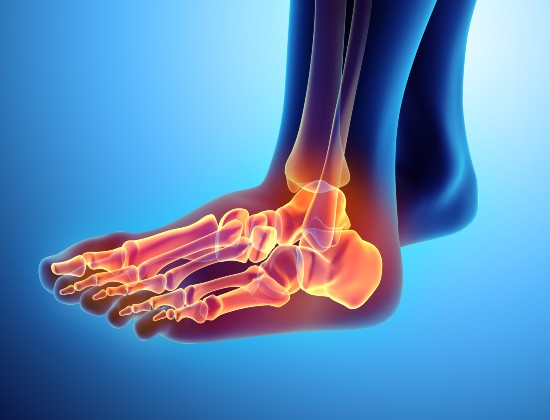Tarsal tunnel syndrome
The tarsal tunnel is an area on the inside of the ankle, just below the prominent ankle bone. Under the skin the tunnel is covered with a thick band (the flexor retinaculum) that protects the arteries, veins, tendons and nerves as they travel from the back of the leg around the ankle and into the foot. One of these structures is the posterior tibial nerve which, if it becomes compressed, can lead to tarsal tunnel syndrome.
What causes it?
Tarsal tunnel syndrome can be caused by:
- Flat feet: fallen arches and tilting of the heel to the outside can stretch the nerve along the inside of the ankle
- An enlarged mass that occupies space within the tunnel can compress the nerve. For example, a varicose vein, ganglion, swollen tendon, bone spur, or soft tissue lump
- An injury, such as an ankle sprain, can cause tissue swelling near the tunnel and compress the nerve
- Diseases such as diabetes or arthritis can cause tissue swelling and compression
What are the symptoms?
- Tingling or a burning feeling from the nerve
- Numbness in the foot, usually around the sole
- Pain around the arch of the foot
Can it become worse?
The symptoms can progress if they are associated with a flat foot that worsens or a mass that becomes larger. It’s a good idea to seek medical advice as soon as possible as this can make the condition more treatable.
How is it diagnosed?
A medical examination and discussion of your symptoms is normally backed up by X-rays to look for bone spurs or arthritis. You may also be offered an MRI scan to detect abnormal swellings or tendon swelling, as well as nerve conduction studies (to test how well your nerves conduct electrical signals) to look for compression on the nerve.
How is it treated?
Non-operative treatments depend on the exact reason for the tarsal tunnel symptoms:
- Your doctor may suggest anti-inflammatory medication if the pain is associated with hindfoot or midfoot arthritis
- Rest or immobilisation of the foot in a boot can help sprained tissue to heal and compression on the nerve to settle
- You may be referred for physiotherapy which can reduce symptoms if pain is associated with problems with the tendon on the inside of the ankle (posterior tibial tendon)
- Injections of steroids and/or a local anaesthetic can reduce inflammation and in some cases cure the problem
- Orthotic insoles, custom shoes or braces can help maintain the foot arch and limit excessive sideways movement of the heel in flat feet, which can be a cause of nerve compression
Surgery is usually offered if the symptoms are due to an abnormal soft tissue mass, or lump, in the tarsal tunnel. It can also treat other problems causing the nerve compression.


